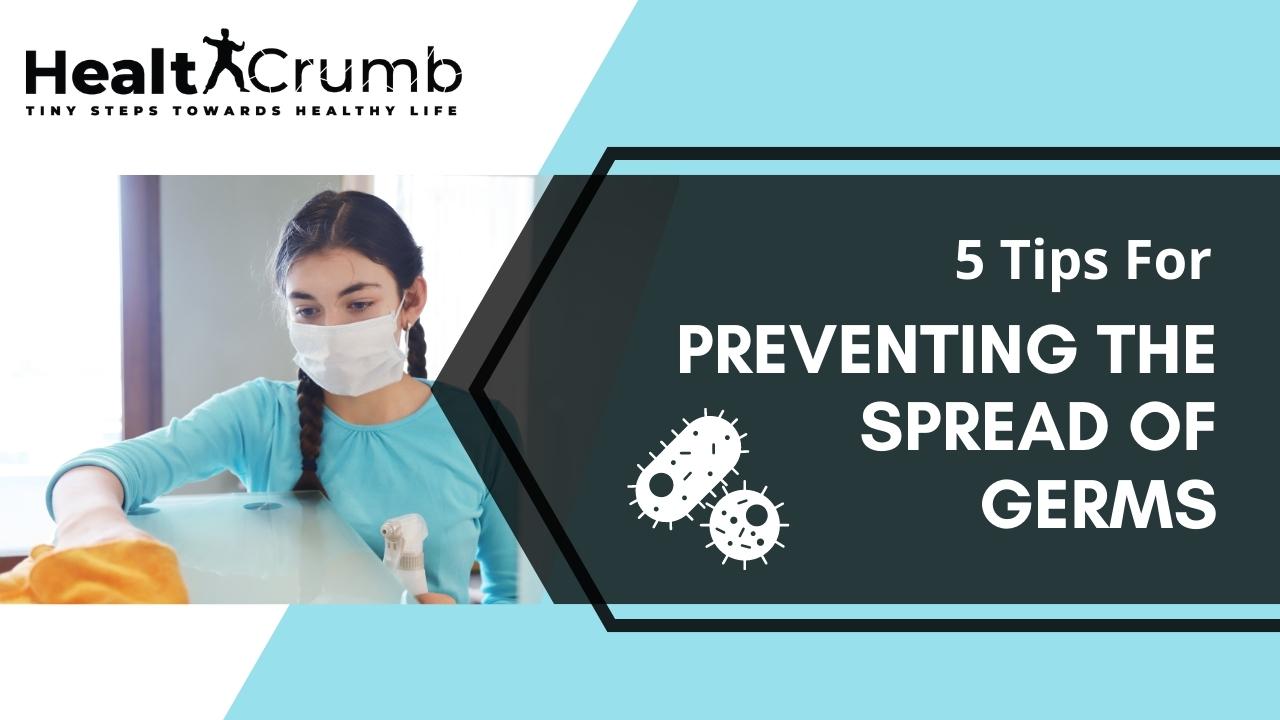Preventing the spread of germs and diseases has never been a topic to discuss until recent months. The mention of germs and disease is enough to conjure mental images of a sea of people sickened by pathogens. It spreads so fast that it can’t be stopped easily in time. Today, such images are the reality for many. The Covid-19 pandemic spread rapidly around the globe, with the number of cases increasing day by day. As scary as the pandemic sounds, protecting oneself is doable, it lies in maintaining and improving one’s daily habits. These ways of preventing the spread of bacteria will help you safeguard your health and will surely go beyond protecting you from the typical cough and cold. Initial shares more on what you can do to improve your hygiene regime. The answer to how to prevent germs from spreading lies in practicing proper hygiene-specifically hand hygiene.
Here are 5 ways for preventing the spread of viruses.
1. Maintain Proper Hand Hygiene
Practicing proper hand hygiene is key to protecting yourself and preventing the spread of germs and bacteria. Proper hand hygiene includes practicing the seven-step handwashing method with soap and water. This aids in making sure to scrub all areas thoroughly. The Centres for Disease Control and Prevention (CDC) have shown that handwashing with soap has the power to prevent 20% of respiratory infections (colds) and 30% of diarrhea-related illnesses. Presently, antibiotics continue to be administered for such preventable illnesses and this potentially creates strains of antibiotic-resistant bacteria. Handwashing not only protects and prevents such diseases but also holds the key to preventing the next health crisis of antibiotic-resistant bacteria.
Further, use a hand sanitizer when engaged in interactions and activities or placed in risk environments or high traffic.
Here is when you need to wash your hands:
- When you sneeze or cough and wipe off your mucus
- Before and after using the washroom
- Dealing with housekeeping, cleaning, and trashing
- Food preparation and consumption period
- Interaction with people including handshakes
2. Proper Food Preparation and Practises
Gastrointestinal diseases are easily preventable, yet it infects millions of children worldwide. Worldwide, diarrhoeal diseases account for 1 in 9 child deaths and are also the second-leading cause of child death under the age of five. Most gastrointestinal diseases spread by coming in contact with infected individuals, feces, or droplets, and often also spread via food, be it an infected person handling the food or by cross-contamination. Practice proper food preparation protocol to prevent the spreading of such gastrointestinal illnesses.
It includes:
- Proper handwashing with soap before and after touching or retrieving food
- Wearing gloves while cooking.
- Cleaning tools before and after usage.
- Use separate cutting boards for different types of food (fish, meats, poultry, seafood, and vegetables).
- Use a food thermometer to measure food temperature (It will help in ensuring thoroughly cooked food and kill pathogens present in the food).
- Ensure there are no pests in food. (Pests spread harmful diseases through microorganisms they picked up from unhygienic surfaces).
3. Regular Disinfection and Sanitization
Regular disinfection and sanitization of surfaces and items are also key to preventing the spreading of viruses. High-touch surfaces and common areas ought to be thoroughly disinfected and cleaned as they are areas that most people pass through, and the potential for cross-contamination or coming into contact with other infected droplets is high. High-touch areas include staircase railings, light switches, tablets, lift buttons, and door handles. Mostly we don’t think much of it, as it is mostly a surface we touch for a fleeting moment. But it is for that brief moment where we are exposed to the surface that we inadvertently encounter a contaminated surface and spread the pathogens further.
4. Wearing a Mask
Covering your face was never needed until the Covid-19. Face masks help protect one from inhaling potentially infected droplets. They protect others from inhaling infected droplets, should you be sick. It also prevents you from touching your mouth and nose while transferring pathogens by respiratory means. It helps in preventing the spread of viruses from one person to another. Therefore, it prevents sudden clusters of infection from occurring, be it the flu, cold, or coronavirus. While face masks prevent the spread of viruses and flu, they only do so if worn correctly and frequently.
Here are some guidelines for proper mask-wearing:
- Wear a face mask when coming within 6 feet of a sick person
- Position the strings to keep the mask firmly in place over the nose, mouth, and chin
- Try not to touch the mask again until you remove it
- Wear a mask before going near other people if you have the flu
- If you are the one infected with flu, wear a face mask to the protection of one’s in the waiting area
- If you’re at high risk for flu complications or if flu is spreading in your community, wear a mask in crowded settings.
- When you’re done wearing a respirator or surgical mask, throw it away and wash your hands. (Never reuse it).
- Wash your cloth face mask after each use.
5. Not Sharing Personal Items
The saying “Sharing is caring” sounds wrong when it’s about spreading germs and bacteria at a higher peak. It only works when you share something good, maybe a recipe, or a book, but when it’s about personal items like comb, brush, or clippers, sharing is not caring. In fact, sharing personal items will lead to cross-contamination between two individuals. Even worse, should either party have open wounds, sharing personal items exposes it to potential blood-borne diseases as contact with bodily fluids increases the risk of transmitting even more diseases. Aside from the risk of blood-borne diseases, personal items are also highly contaminated with bacteria on their surface. No one knows where the item has been except the owner, what environment the item was exposed to, and whether the item was cleaned before being shared, even more so, avoid sharing personal items in such cases.
How to Stop the Spread of Germs at Home?
Germs can be spread from person to person, or through touching unclean surfaces or equipment. To stop the spread of germs and bacteria, focus your efforts on cleaning areas in the house where germs are more likely to spread, such as the toilet and kitchen. Use either soap and hot water to rinse the germs and bacteria away, or a disinfectant to kill them. Ensure you dry surfaces such as chopping boards and worktops thoroughbred after cleaning. Dampness helps the remaining germs to survive and if there’s more water, it multiplies. Clean anywhere that germs are likely to spread regularly, including after each use, preventing the spread of viruses.
Here are some tips to stop the spread of germs at home:
Cloths and Sponges
- Use disposable cloths or paper towels (when possible)
- Wash reusable cloths at 60C after each use
- Wash brushes in dishwater regularly, or clean with detergent and warm water
Mops and Buckets
- Use 2 buckets for mopping-one for rinsing and the other for detergent
- Clean and dry mops and buckets after use
Washrooms
- Keep the U-bend and toilet bowl clean by flushing after use
- Use toilet cleaner and brush every few days
- Remove limescale regularly using descaling product
- Keep toilet seat, handle and rim clean by using disinfectants
Baths, Sinks, and Showers
- Clean baths, sinks, and showers frequently, (if used regularly)
- Use disinfectants when an ill person in your home uses them
- Run hot water in a shower before using it (if not used for a while)
Kitchen
- Clean food preparation surfaces before use
- Use separate chopping boards for uncooked food, such as raw meat or food that does not need to be cooked (such as salad leaves)
- Wash and dry your hands after washing or handling raw foods
Floors
- Clean floors regularly with warm water and detergent to remove dirt
- If soiled with vomit, clean the floor using a disposable cloth and warm water, then disinfect it.
Carpet and Soft Furnishings
- Steam cleaning is effective against germs and bacteria on carpets and furnishings
- Curtains can be cleaned by laundering
Pets and Other Animals
- Keep pet food separate from human food
- Always wash your hands after touching animals and their food, toys, caves, and litter trays
- Separately store dishes, utensils, and tin openers used for pet food.
Laundry
- Wash your hands after handling dirty laundry
- Wash all garments, towels, and household linen at 60C or at 40C with a bleach-based laundry product to prevent germs and bacteria from spreading
- Don’t leave laundry in the washing machine, any remaining germs will be multiplied rapidly
Waste disposal
- Foot-operated bins are more hygienic as they reduce the risk of getting germs onto your hands from touching the bin lid
- Always wash your hands after handling waste material
- Throw rubbish away carefully to avoid attracting insects, rats, and mice.
Final Words
Overall, practicing and maintaining good hygiene is everyone’s responsibility. Following the ways of preventing the spread of bacteria will help you maintain good health and will keep protected from getting infected with any harmful disease.



